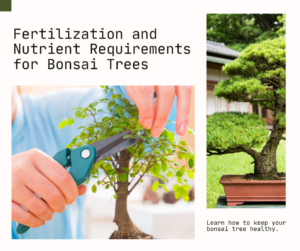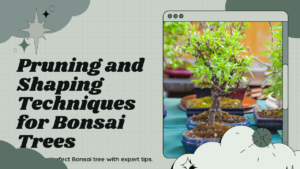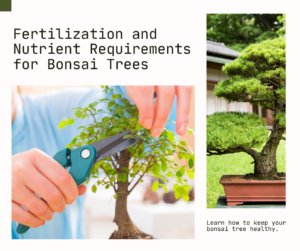
Welcome to the world of indoor bonsai trees! Growing bonsai trees is not only a beautiful and rewarding hobby, but it can also bring nature’s tranquility right into your home. With the right knowledge and care, you can cultivate the fastest growing bonsai trees indoors, creating a miniaturized masterpiece that will captivate your senses.
Indoor bonsai trees offer several advantages over their outdoor counterparts. They allow you to enjoy the beauty and serenity of bonsai all year round, regardless of the weather conditions outside. Plus, they make for stunning decorative pieces that add a touch of elegance to any indoor space.
In this article, we will explore the art of cultivating bonsai trees indoors. We will provide you with step-by-step guidance on selecting the right bonsai species, creating the ideal growing environment, and mastering the essential techniques for nurturing and shaping your bonsai tree.
So, whether you’re a seasoned bonsai enthusiast looking to expand your collection or a beginner eager to embark on a new green adventure, read on to discover the secrets of cultivating the fastest growing bonsai trees indoors.
Key Takeaways:
- Growing bonsai trees indoors allows you to enjoy their beauty and serenity all year round.
- Indoor bonsai trees are stunning decorative pieces that enhance any indoor space.
- Cultivating bonsai trees indoors requires selecting the right species and creating the ideal growing environment.
- Mastering pruning, shaping, and proper care techniques is essential for the successful cultivation of indoor bonsai trees.
- Embark on your bonsai journey and experience the joy of nurturing and shaping these miniature living works of art.
The Art of Cultivating Bonsai Trees
Welcome to the fascinating world of cultivating bonsai trees. This ancient art form has captured the hearts of enthusiasts for centuries, offering a unique way to connect with nature and find tranquility in your own home. Let’s dive deeper into the history, significance, and the serene appeal of growing these miniature wonders.
The History and Significance of Bonsai Trees
Bonsai trees originated in ancient China and were later embraced by the Japanese, who elevated the practice to an art form. The word “bonsai” itself means “planted in a container,” symbolizing the harmony between nature and the hand of the cultivator. Bonsai trees were initially cultivated for spiritual and symbolic purposes, representing balance, patience, and the beauty of imperfection.
“A bonsai is a representation of all aspects of nature: mountains, forests, rivers, and valleys captured in a miniature form.”
The art of bonsai soon spread to other cultures, becoming a beloved hobby and a testament to human ingenuity. Today, bonsai trees are admired for their intricate beauty, evoking a sense of peace and serenity in both the observer and cultivator.
The Allure of Growing Miniaturized Trees
What sets bonsai trees apart is their unique charm and the ability to create a mesmerizing natural landscape in a small, confined space. By carefully pruning, training, and shaping these miniature trees, you can create stunning replicas of their large counterparts. The art of bonsai allows you to appreciate the beauty and complexity of nature on a much smaller scale.
Each bonsai tree tells a story, representing the passage of time through its intricate branches and weathered bark. Cultivating bonsai trees provides a rewarding journey of self-reflection, patience, and mindful observation as you witness their growth and change over the years.
Image of a Beautiful Bonsai Tree

The Sense of Peace in Bonsai Cultivation
Engaging in the art of cultivating bonsai trees offers a sense of peace and tranquility. As you focus on the meticulous care required to nurture these living sculptures, the outside world fades away, allowing you to find solace in the present moment.
The act of cultivating bonsai trees cultivates a deep connection with nature. Spending time tending to these tiny trees provides an opportunity to slow down, reflect, and find respite from the modern world’s hustle and bustle. In caring for these delicate creations, you discover a sense of purpose and harmony, fostering a rejuvenating and meditative practice.
This section has explored the art and allure of cultivating bonsai trees. In the next section, we will discuss the different bonsai species suitable for indoor growth, helping you choose the perfect companion for your bonsai journey.
Choosing the Right Bonsai Species for Indoor Growth
When it comes to cultivating bonsai trees indoors, choosing the right species is crucial for success. Not all bonsai tree species thrive in indoor environments, so selecting the ones that are well-suited to indoor growth is essential. In this section, we will explore the different bonsai species that are suitable for indoor cultivation, providing you with valuable tips to help you make the right choices for your indoor bonsai garden.
One of the key factors to consider when selecting bonsai tree species for indoor growth is their sunlight requirements. Some species require direct sunlight, while others can tolerate lower light conditions. Understanding the specific sunlight needs of different bonsai species will allow you to position them accordingly in your indoor space to ensure optimal growth.
Temperature tolerance is another important aspect to consider. Bonsai trees have varying temperature requirements, and it’s essential to choose species that can adapt to the temperature levels in your indoor environment. Some species are more cold-hardy, while others are more heat-tolerant. By selecting the right bonsai species that can thrive within the temperature range of your indoor space, you’ll create an ideal environment for your trees to grow.
Fastest Growing Bonsai Species for Indoor Growth
- Ficus microcarpa: This species, commonly known as the Chinese banyan tree or ginseng ficus, is a popular choice for indoor bonsai due to its resilience and fast growth rate. It has small, glossy leaves and forms an intricate network of aerial roots, which add to its aesthetic appeal.
- Carmona retusa: Also known as the Fukien tea tree, this species is known for its beautiful white flowers and dark green foliage. It is relatively easy to care for and adapts well to indoor environments, making it an excellent choice for beginners.
- Portulacaria afra: Commonly referred to as the elephant bush or dwarf jade, this species is a succulent bonsai tree that is well-suited for indoor growth. It has small, round leaves and a thick, fleshy trunk, making it a visually appealing choice for bonsai enthusiasts.
These are just a few examples of bonsai species that are known for their fast growth and suitability for indoor cultivation. By choosing the right bonsai species based on factors such as sunlight requirements, temperature tolerance, and growth rate, you can create a thriving indoor bonsai garden filled with beautifully miniaturized trees.
Considerations for Indoor Bonsai Cultivation
When it comes to cultivating bonsai trees indoors, there are several important considerations to keep in mind. From proper lighting and temperature control to watering techniques and soil care, each factor plays a crucial role in the success of your indoor bonsai garden. In this section, we will explore these key considerations in detail, offering helpful tips and insights to ensure that your indoor bonsai trees thrive.
Proper Lighting
Indoor bonsai trees rely heavily on adequate lighting for their growth and overall health. While natural sunlight is preferred, it may not always be readily available or sufficient for all bonsai tree species. In such cases, you can supplement with artificial lighting sources, such as fluorescent or LED grow lights. These lights should be placed at an appropriate distance from the bonsai trees to provide the right amount of light intensity. Remember to adjust the lighting duration based on the specific needs of your bonsai species.
Temperature Control
Indoor bonsai trees thrive in a stable temperature range, typically between 60°F and 80°F (15°C – 27°C). Sudden temperature fluctuations or exposure to extreme heat or cold can be detrimental to their health. To maintain a suitable temperature, avoid placing your bonsai trees near drafty windows, heating or cooling vents, or any other sources of temperature variations. Additionally, you can use thermostats or temperature-regulating devices to ensure a consistent and ideal environment for your indoor bonsai trees.
Watering Techniques
Proper watering is crucial for keeping indoor bonsai trees hydrated without causing root rot or waterlogging. The watering frequency and amount will vary depending on factors such as tree species, pot size, and environmental conditions. As a general rule, it is best to water your bonsai tree when the topsoil feels slightly dry, but before it becomes completely dry. Take care not to overwater, as excessive moisture can lead to root problems. Use a watering can or a gentle misting spray to distribute water evenly throughout the soil.
Soil Care
The type of soil used for indoor bonsai trees should promote proper drainage and aeration. Bonsai-specific soil mixes are available that consist of a blend of components such as Akadama, pumice, and volcanic rock. These mixes help prevent waterlogging and ensure that the roots receive the necessary oxygen. Regularly check the soil moisture levels by gently poking a finger into the soil. If the soil feels overly wet or compacted, it may be time to repot your bonsai tree using fresh soil to optimize its growth.
By considering these key factors—proper lighting, temperature control, watering techniques, and soil care—you can create an optimal environment for your indoor bonsai trees to thrive. Take the time to understand the specific needs of your bonsai species and tailor your cultivation practices accordingly. With patience, dedication, and a little bit of artistic finesse, you’ll be rewarded with the beauty and tranquility of a flourishing indoor bonsai garden.
| Considerations for Indoor Bonsai Cultivation |
|---|
| Proper Lighting |
| Artificial lighting sources, such as fluorescent or LED grow lights, can supplement natural sunlight. |
| Place lights at an appropriate distance to provide the right light intensity. |
| Adjust lighting duration based on the specific needs of your bonsai species. |
| Temperature Control |
| Maintain a stable temperature range of 60°F – 80°F (15°C – 27°C). |
| Avoid exposing bonsai trees to extreme heat, cold, or sudden temperature fluctuations. |
| Watering Techniques |
| Water when the topsoil feels slightly dry, but before it becomes completely dry. |
| Avoid overwatering to prevent root rot. |
| Soil Care |
| Use bonsai-specific soil mixes for drainage and aeration. |
| Regularly check soil moisture levels and repot as needed. |
Providing Adequate Light and Temperature

When it comes to cultivating indoor bonsai trees, providing the right amount of light and maintaining optimal temperature conditions is crucial for their overall health and growth.
The Importance of Light
Light plays a vital role in the photosynthesis process, enabling bonsai trees to convert energy into food. Insufficient light can lead to weak growth, poor foliage development, and even the tree’s decline. On the other hand, too much light can cause leaf burn and heat stress.
For optimal growth, it is recommended to place your bonsai tree in a location that receives bright, indirect light. South or west-facing windows are usually ideal, as they provide a good balance of light intensity throughout the day. If natural light is limited, you can supplement with artificial lighting sources such as full-spectrum LED grow lights.
Temperature Range for Indoor Bonsai Trees
Temperature also plays a critical role in the well-being of indoor bonsai trees. Most bonsai tree species thrive within a temperature range between 60°F (15°C) and 75°F (24°C). However, it’s essential to consider the specific temperature requirements of your bonsai tree species, as some may have different preferences.
During winter, it’s crucial to protect your bonsai tree from drafts and extreme temperature fluctuations. Placing a humidity tray with water near the tree can help maintain a more stable and suitable microclimate.
Cultivating the Right Environment
To create a conducive environment for your indoor bonsai trees, consider the following tips:
- Position your bonsai tree near a window with proper sunlight exposure.
- Monitor the temperature regularly and adjust it if necessary.
- Avoid placing your bonsai tree near heating or cooling vents.
- Utilize a humidifier or mist the leaves occasionally to maintain adequate humidity levels.
Providing the right light and temperature conditions for your indoor bonsai trees is essential for their overall health, vitality, and growth. By ensuring sufficient light and maintaining the ideal temperature range, you will be well on your way to cultivating thriving and beautiful bonsai trees.
| Lighting Conditions | Temperature Range |
|---|---|
| Bright, indirect light | 60°F (15°C) – 75°F (24°C) |
| Supplement artificial lighting if needed | Protect from drafts and extreme temperature fluctuations |
| Avoid direct sunlight and leaf burn | Maintain suitable microclimate during winter |
Proper Watering and Soil Care
Proper watering and soil care are essential for the health and growth of your fast-growing indoor bonsai trees. By understanding the right techniques and frequency, as well as the importance of well-draining soil mixes, you can ensure optimal root development and overall plant vigor.
Watering Techniques
When it comes to watering your indoor bonsai trees, it’s crucial to strike the right balance. Overwatering can lead to root rot, while underwatering can cause dehydration and hinder growth. Here are some recommended watering techniques:
- Visual Inspection: Check the moisture level of the soil regularly. If the top layer feels dry, it’s time to water.
- Soaking Method: Submerge the bonsai pot in a container of water, allowing the soil to absorb moisture. Remove it once the topsoil is saturated.
- Misting: Spray fine mist on the foliage to create a humid environment, especially during dry periods or when the temperature is high.
Frequent Watering vs. Drought Stress
Fast-growing indoor bonsai trees typically require more frequent watering compared to their outdoor counterparts. The specific watering needs may vary depending on species, pot size, and environmental conditions. Monitor your bonsai’s moisture requirements and adjust the frequency accordingly.
However, it’s equally important to provide periods of drought stress to stimulate healthy root growth. Alternate between slightly drying out the soil and providing ample water to strike the right balance and promote robust root development.
The Importance of Well-Draining Soil
Bonsai trees thrive in well-draining soil mixes that allow excess water to escape, preventing waterlogged conditions and root suffocation. Good soil composition is integral to soil fertility, aeration, and moisture retention. Here is a simple, effective bonsai soil mix:
| Component | Percentage |
|---|---|
| Akadama | 30% |
| Organic Potting Soil | 30% |
| Pumice | 30% |
| Perlite | 10% |
Ensure the soil mix is well-blended before potting your bonsai tree. The combination of these components provides a balanced environment for the roots, offering necessary nutrients, adequate drainage, and excellent aeration.
Remember, proper watering and soil care are the foundation of healthy bonsai trees. By following these best practices, you’ll promote vigorous growth, thriving foliage, and a flourishing indoor bonsai collection.
Pruning and Shaping Techniques

Pruning and shaping are vital techniques in maintaining the health and aesthetics of your indoor bonsai trees. Pruning involves selectively removing branches, leaves, or roots to encourage proper growth and enhance the tree’s form.
Regular pruning helps improve the tree’s overall health by removing diseased or damaged parts. It also allows for better air circulation and light penetration, which are essential for the tree’s growth.
When shaping your bonsai tree, you have the opportunity to create a unique and visually appealing form. Each bonsai style, such as formal upright, slanting, or cascading, requires specific shaping techniques to achieve the desired aesthetic appeal.
“Pruning and shaping your indoor bonsai trees is like sculpting living art. It allows you to create your miniature masterpiece, harmonizing nature and creativity.”
To get started with pruning and shaping, follow these steps:
- First, determine the bonsai style you want to achieve. Different styles require distinct pruning and shaping techniques.
- Inspect your bonsai tree and identify areas that require pruning. Look for branches that are too long, crossing each other, or growing in undesirable directions.
- Use sharp, sterile pruning shears or bonsai-specific pruning tools to make precise cuts. Remember to disinfect your tools between cuts to prevent spreading diseases.
- Start by removing larger branches or those that disrupt the desired form. Then, proceed to remove smaller branches, leaves, or buds as necessary.
- Regularly step back and assess the tree’s shape during the pruning process. It is crucial to maintain balance and proportion while shaping your bonsai tree.
- Once you are satisfied with the overall shape, refine the details by pinching back new growth or pruning small twigs.
- Monitor your tree’s growth and repeat the pruning and shaping process as needed. Remember that shaping is an ongoing process to maintain the desired form.
Pruning and Shaping Tools
Using the right tools is essential for successful pruning and shaping. Here are some commonly used tools:
| Tool | Description |
|---|---|
| Bonsai pruning shears | Specially designed shears with sharp, precise blades for trimming branches and foliage. |
| Bonsai concave cutters | These cutters have a concave profile to make clean cuts without leaving visible scars on branches. |
| Knob cutters | Knob cutters are used to remove larger branches or smooth out branch stubs after pruning. |
| Bonsai wire cutters | These specialized wire cutters are essential for safely removing wire used to shape your bonsai tree. |
| Bud scissors | Small, fine-tipped scissors used for close and precise trimming of buds and leaves. |
With the right techniques and tools, pruning and shaping your indoor bonsai trees can be a rewarding and enjoyable experience. It allows you to express your creativity while cultivating healthy and beautiful miniature trees.
Fertilization and Nutrient Requirements

Ensuring proper fertilization and meeting the nutrient requirements of your fast-growing bonsai trees is essential for their health and vitality. Providing the right balance of nutrients not only promotes vigorous growth but also enhances the overall appearance of your bonsai’s foliage.
To meet the nutrient needs of your bonsai, it’s important to choose the right fertilizers. Look for a balanced, slow-release fertilizer specifically formulated for bonsai trees. These fertilizers are designed to release nutrients gradually, ensuring a steady supply over an extended period. Additionally, consider using organic fertilizers, as they provide a more natural and sustainable source of nutrients for your bonsai.
When it comes to applying fertilizers, timing is key. During the growing season, which typically spans from spring to early autumn, apply fertilizer every two weeks. As the growth slows down in the winter months, reduce the frequency to once a month. Be sure to follow the packaging instructions for the specific fertilizer you are using, as different brands may have varying application rates.
When applying fertilizer, distribute it evenly across the surface of the soil. Avoid applying fertilizer directly on the trunk or foliage of the bonsai, as this can cause burn and damage. Gently water the bonsai immediately after fertilization to ensure the nutrients are absorbed properly by the roots.
Signs of Nutrient Deficiencies
Monitoring your bonsai tree for signs of nutrient deficiencies is crucial to maintaining its health. Here are some common signs to look out for:
- Pale or yellowing leaves: This can indicate a nitrogen deficiency.
- Stunted growth: Lack of phosphorus can contribute to poor growth.
- Leaf discoloration: A lack of potassium may cause leaves to develop brown or scorched edges.
- Poor flowering or fruiting: Insufficient potassium or phosphorus can impact the bonsai’s ability to produce flowers or fruits.
If you notice any of these symptoms, adjust your fertilization routine accordingly. Increasing the frequency or adjusting the type of fertilizer used can help address nutrient deficiencies and promote healthy growth.
Proper fertilization is the key to vibrant and flourishing bonsai trees. By meeting their nutrient requirements and providing balanced fertilizers, you’ll enjoy the beauty of a thriving bonsai that brings you joy and satisfaction.
Nutrient Requirements for Fast-Growing Bonsai Trees
| Nutrient | Functions | Sources |
|---|---|---|
| Nitrogen (N) | Stimulates leaf and stem growth | Organic fertilizers, ammonium-based fertilizers |
| Phosphorus (P) | Promotes root development and flowering | Bone meal, superphosphate |
| Potassium (K) | Enhances overall plant vigor and disease resistance | Potassium sulfate, wood ashes |
| Calcium (Ca) | Strengthens cell walls and aids nutrient absorption | Gypsum, calcium carbonate |
| Magnesium (Mg) | Essential for chlorophyll production | Epsom salt, dolomite lime |
Remember, every bonsai tree has its unique nutrient requirements. Monitoring the health of your bonsai, adjusting fertilization practices, and providing adequate nutrients will help support their growth and ensure their longevity.
FAQ
Q. What are the benefits of growing bonsai trees indoors?
A. Growing bonsai trees indoors allows you to enjoy the beauty and tranquility of nature in a compact space. Indoor bonsai trees can help purify the air, reduce stress, and bring a sense of peace and harmony to your home or office. Plus, they make great conversation starters!
Q. How do I choose the right bonsai species for indoor growth?
A. When selecting a bonsai species for indoor growth, consider factors such as lighting requirements, temperature tolerance, and growth rate. Some of the fastest growing bonsai tree species that thrive indoors include the Ficus, Chinese Elm, and Juniper. Choose a species that suits your indoor environment and matches your desired aesthetic.
Q. What are the key considerations for indoor bonsai cultivation?
A. Successful indoor bonsai cultivation requires attention to lighting, temperature, watering techniques, and soil care. Indoor bonsai trees need access to adequate sunlight, a regulated temperature range, careful watering practices, and well-draining soil to thrive.
Q. How important is proper lighting for bonsai trees?
A. Proper lighting is crucial for the health and growth of bonsai trees. Indoor bonsai trees need access to bright, indirect light to thrive. Place your bonsai tree near a south-facing or east-facing window where it can receive sufficient sunlight. If natural light is limited, you can supplement it with fluorescent or LED grow lights.
Q. How can I maintain optimal temperature for indoor bonsai growth?
A. Indoor bonsai trees thrive in a temperature range of 60-75°F (15-24°C). Avoid exposing them to drastic temperature fluctuations or extreme heat or cold. Keep them away from drafts and ensure consistent temperatures by placing them in a well-insulated area with stable room temperatures.
Q. What are the proper watering techniques and frequency for bonsai trees?
A. Watering bonsai trees requires a delicate balance. Water your bonsai thoroughly until the water drains from the pot’s drainage holes, ensuring the entire root system is hydrated. Wait until the topsoil feels slightly dry before watering again. The frequency may vary depending on the species, pot size, and environmental conditions.
Q. What type of soil mix should I choose for fast-growing indoor bonsai trees?
A. Fast-growing bonsai trees benefit from well-draining soil mixes that promote healthy root growth. Use a mix that combines Akadama or similar bonsai soil, organic matter such as compost, and a gritty component like pumice or perlite. This blend provides a balance of moisture retention, aeration, and nutrient availability.
Q. What pruning and shaping techniques should I use for indoor bonsai trees?
A. Pruning is essential for shaping and maintaining the desired form of bonsai trees. Regular pruning removes excessive growth, promotes back-budding, and enhances the overall aesthetics. Use sharp and clean bonsai shears to trim branches and foliage, preserving the tree’s natural style. Prune during the appropriate season for your bonsai species.
Q. How can I fertilize my fast-growing bonsai trees and meet their nutrient requirements?
A. Bonsai trees have specific nutrient requirements to support their growth. Use a slow-release bonsai fertilizer or organic fertilizers designed explicitly for bonsai trees. Apply the fertilizer during the growing season, following the manufacturer’s instructions. Adjust the frequency and strength of fertilization based on the species and overall health of your bonsai tree.
Q. What are some common challenges in indoor bonsai cultivation, and how can I troubleshoot them?
A. Common challenges in indoor bonsai cultivation include overwatering, inadequate lighting, pests, and diseases. To troubleshoot these issues, ensure you water your bonsai only when needed, provide sufficient light or supplement with grow lights, regularly inspect for pests, and promptly address any signs of diseases with appropriate treatments.
Conclusion
Throughout this article, we’ve explored the art and joy of cultivating bonsai trees indoors. By choosing the right bonsai species for indoor growth, providing adequate light and temperature, practicing proper watering and soil care, and employing pruning and shaping techniques, you can experience the rewards of growing the fastest growing bonsai trees in the comfort of your own home.
Indoor bonsai cultivation offers a unique opportunity to connect with nature and find serenity in the miniature world of bonsai trees. The beauty and tranquility they bring to any space cannot be understated. With some patience, knowledge, and dedication, you can witness the transformative journey of a tiny sapling flourishing into a stunning work of living art.
As you embark on your own bonsai journey, remember that each tree tells its own story. Each success and milestone you achieve will deepen your connection with this ancient practice and reaffirm your passion for bonsai cultivation. Whether you’re a beginner or a seasoned enthusiast, the possibilities are endless and the sense of fulfillment immeasurable.
















